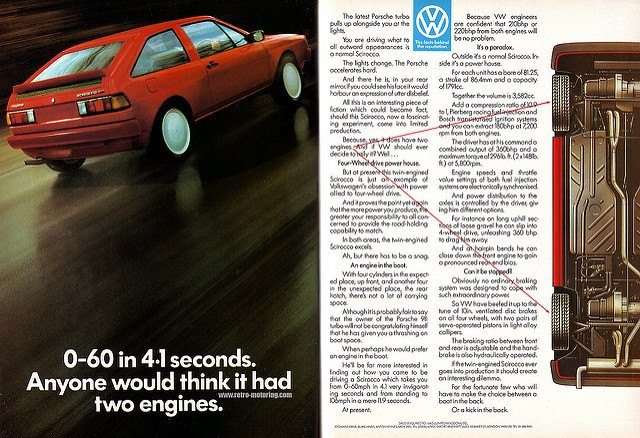#twin-engine
Bi-Curiosities: Volkswagen's Twin-Engine Terrors
Though today’s hybrids have popularized it, the idea of installing more than one engine in a car to supplement power isn’t particularly new or innovative. In fact, it’s almost as old as the automobile itself.
There are plenty of historical examples of multi-engine cars; probably the most notable are absolute land speed record attempts. Just last week, for example, was the 51st anniversary of the American-made Goldenrod’s 409 mph record, set using no less than four 426 Hemi V8s borrowed from Chrysler.
But even further back, Alfa-Romeo had tried to break the stranglehold of the Silver Arrows in Grand Prix racing by utilizing two straight-eights in a P3 Grand Prix chassis. The solution was innovative, if not particularly successful.
But the exploits of sticking multiple motors in a vehicle to boost power and traction were not limited to exotic racers and record setters. In the 1980s, the concept was reintroduced in a few interesting packages. As it became increasingly clear that Audi’s all-wheel drive would revolutionize the world of rally, Volkswagen Motorsport director Klaus-Peter Rosorius felt Volkswagen shouldn’t play second fiddle to the Quattro.
Instead, they’d play with a second engine.
















Recent Comments